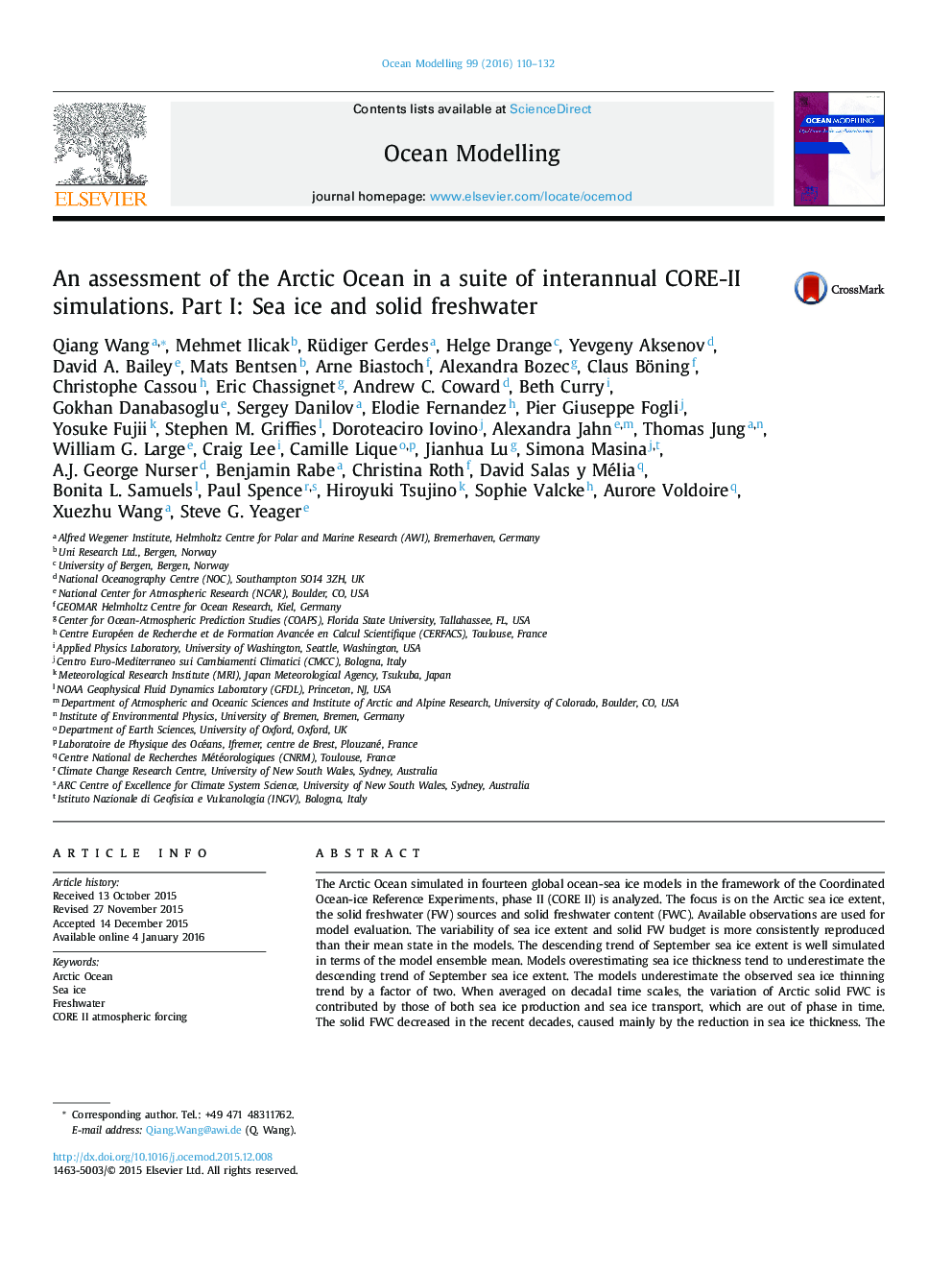| Article ID | Journal | Published Year | Pages | File Type |
|---|---|---|---|---|
| 6388075 | Ocean Modelling | 2016 | 23 Pages |
Abstract
The Arctic Ocean simulated in fourteen global ocean-sea ice models in the framework of the Coordinated Ocean-ice Reference Experiments, phase II (CORE II) is analyzed. The focus is on the Arctic sea ice extent, the solid freshwater (FW) sources and solid freshwater content (FWC). Available observations are used for model evaluation. The variability of sea ice extent and solid FW budget is more consistently reproduced than their mean state in the models. The descending trend of September sea ice extent is well simulated in terms of the model ensemble mean. Models overestimating sea ice thickness tend to underestimate the descending trend of September sea ice extent. The models underestimate the observed sea ice thinning trend by a factor of two. When averaged on decadal time scales, the variation of Arctic solid FWC is contributed by those of both sea ice production and sea ice transport, which are out of phase in time. The solid FWC decreased in the recent decades, caused mainly by the reduction in sea ice thickness. The models did not simulate the acceleration of sea ice thickness decline, leading to an underestimation of solid FWC trend after 2000. The common model behavior, including the tendency to underestimate the trend of sea ice thickness and March sea ice extent, remains to be improved.
Keywords
Related Topics
Physical Sciences and Engineering
Earth and Planetary Sciences
Atmospheric Science
Authors
Qiang Wang, Mehmet Ilicak, Rüdiger Gerdes, Helge Drange, Yevgeny Aksenov, David A. Bailey, Mats Bentsen, Arne Biastoch, Alexandra Bozec, Claus Böning, Christophe Cassou, Eric Chassignet, Andrew C. Coward, Beth Curry, Gokhan Danabasoglu, Sergey Danilov,
